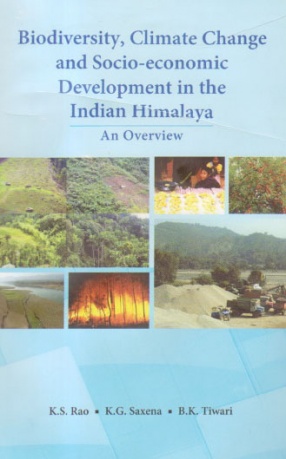Biodiversity, Climate Change and Socio-Economic Development in the Indian Himalaya: An Overview
United Nations Framework Convention on Climate Change (UNFCCC), Convention on Biological Diversity (CBD) and Inter-governmental panel on climate change (IPCC) laid down a global strategy of saving the mankind from the threats posed by changing climate and loss of biodiversity. These changes are confounded with other global changes in biophysical social economic political environment. Harmonization of environmental, economic and social development trajectories, the path of sustainable development, has been on the forefront of the global agenda. Persistence of current climate change trend will threaten biodiversity conservation in future. Nevertheless, judicious management of biodiversity cold mitigate climate change. Himalayan mountain system covering partly/fully eight countries (viz, Afghanistan, Bangladesh, India, Nepal, China, Bhutan, Bhutan and Myanmar), is distinguished globally for its immense biodiversity and sensitivity to climate change. Responding to the global importance of the Himalaya, India has drawn a National Mission “Sustaining the Himalayan Ecosystem as part of the National Action Plan on Climate Change. This publication, an outcome of the research and development activities supported by the United Nations Educational, Scientific and cultural organization (UNESCO Regional office, New Delhi), the United Nations University (UNU, Tokyo), MacArthur Foundation, Asia Pacific Network for Sustainable Forest Management and Rehabilitation (APFNet) and Asia Pacific Network (APN), publication provides an overview of the state of knowledge about climate change and biodiversity management and their linkages with socio-economic development in the Himalaya, with particular reference to the Himalayan region of India, with an ultimate objective of identifying research and development action points to be pursued for managing Himalayan biodiversity for climate change mitigation/adaptation and socio-economic development.
Contents: 1. Introduction. 2. Himalayan region of India. 3. Climate change. 4. Biodiversity. 5. Climate-biodiversity-livelihood linkages. 6. Managing biodiversity for climate change mitigation/adaptation and socio-economic development: strategic actions. References.
Get it now and save 10%
BECOME A MEMBER








Bibliographic information
K.G. Saxena
B.K. Tiwari